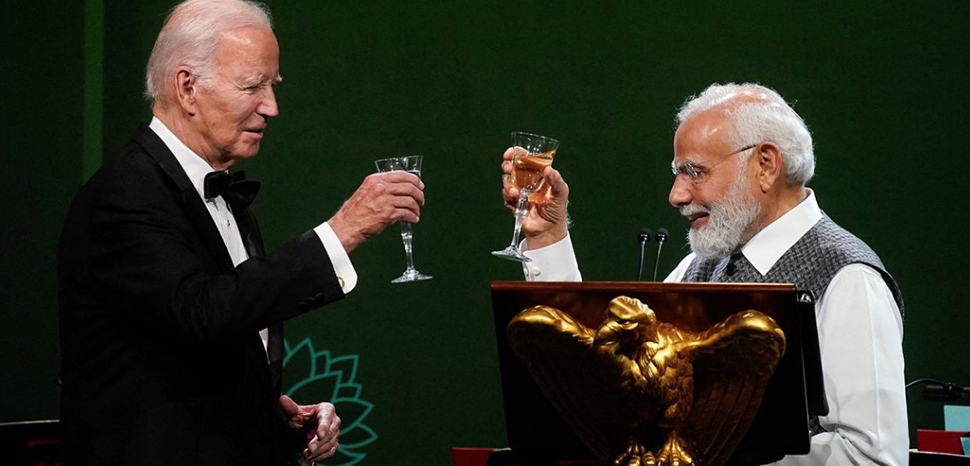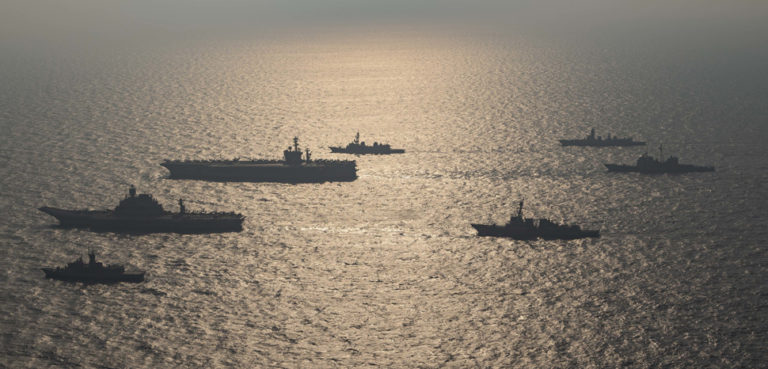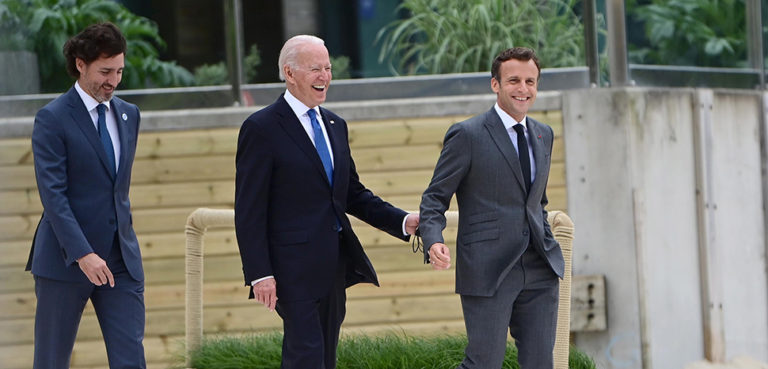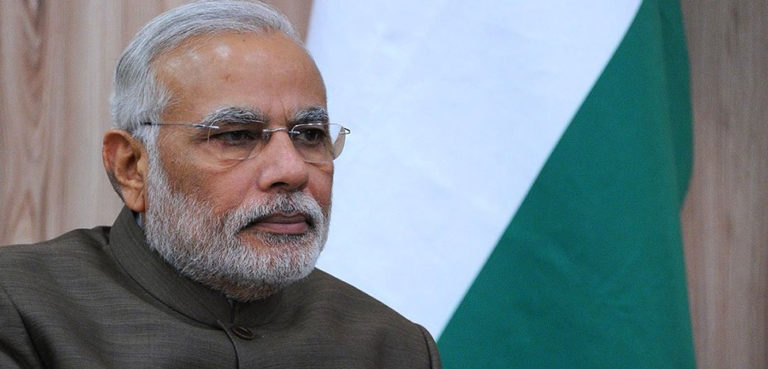The pomp and grandeur displayed by the Biden administration during Indian Prime Minister Modi’s first-ever state visit to the United States, which included an address to the joint session of Congress and a state dinner, reeked of desperation. Eager to entice Modi, the Biden administration went to extraordinary lengths to convey an exaggerated sense of India’s strategic importance. Their apparent courtship of Modi is driven by a desperate desire to establish a tangible alliance aimed at countering China’s growing influence on the global stage, while simultaneously driving a wedge between New Delhi and Moscow. Through lavish ceremonies and diplomatic pleasantries, Washington left no stone unturned in its portrayal of India as an “indispensable friend” in today’s geopolitical landscape. With a raft of agreements and deals, spanning from defense, semiconductors, space, telecommunications, critical minerals and core technologies, Modi’s visit is perhaps one of the most important foreign policy venture in India’s recent history.
“The dark clouds of coercion and confrontation are casting their shadow in the Indo-Pacific. The stability of the region has become one of the central concerns of our partnership” said Modi in his “euphoric” address to the Congress yesterday. But, caught in the whirlwind of Washington’s excessive “generosity and hospitality,” PM Modi must not succumb to the allure of these calculated romantic overtures of Washington, which are destined to disrupt the delicate balance the Indo-Pacific, posing economic and political complications for all stakeholders. The strategic intent of the Biden administration towards Modi’s visit is twofold: firstly, to forge a robust tapestry of interconnected defense, technological, and trade alliances with India, thereby presenting a tangible counterweight to China’s ever-expanding clout in the Asia-Pacific sphere. Secondly, the administration aims to sow seeds of uncertainty and estrangement in the longstanding relationship between Russia and India.
However, the Biden administration’s pursuit of these objectives is fraught with complexities and potential pitfalls. The intricate web of challenges and potential obstacles that lie ahead for the American strategy of enticing India are too big. Beyond the symbolism and ceremonial gestures, the Biden administration has a strategic interest in drawing India closer within its manufacturing and defense sphere, a move that is targeted at reduction in New Delhi’s dependence on Russian military equipment but also to facilitate the diversification of US supply chains away from China. During the Trump era, the United States generously granted India Strategic Trade Authorization Tier 1 (STA-1) status. This strategic move effectively facilitated the export of cutting-edge high technology products from US companies to their Indian counterparts. Under the Biden Administration, this high technology partnership has further deepened. Among them, the Initiative on Critical and Emerging Technology, jointly spearheaded by the national security advisors of both nations, is of strategic nature. Additionally, the reinvigoration of the US-India Strategic Trade Dialogue, focusing on the controlled export of dual-use items, further underscores the mutual commitment to robust cooperation in the realm of advanced technology. Ironically, the majority of US policy makers think that if New Delhi were to weaken its ties with Moscow, it would inadvertently strengthen the bond between two “adversarial” powers – China and Russia – and this scenario would inversely lead to India’s inordinate reliance on the United States. But this will compel Modi to divert resources from developmental priorities to defense expenditures – certainly it will have a negative impact on the Indian economy. These hawks in the Biden administration, though frustrated over India’s oil purchases from Russia and its precarious balancing act on the Ukraine war, believe that India is the most viable option to counter China in the Indo-Pacific. For precisely this very reason, Modi’s visit has been granted a distinct and exceptional treatment by the Biden administration.
Over the past decade, the United States and India have witnessed a visible transformation in their relationship, characterized by numerous avenues of engagement. The strategic dialogues between the two nations encompass a range of initiatives, such as the Quad (involving Japan and Australia), I2U2 (including Israel and the United Arab Emirates), the 2+2 Dialogue featuring defense and foreign ministers, the Defense Policy Group (DPG), and the aforementioned Critical and Emerging Technologies (iCET) Initiative. Furthermore, there exist numerous forums for trade policy, commercial dialogue, economic and financial partnership, strategic trade, and CEO interaction, like the Strategic Clean Energy Partnership, Higher Education Dialogue, and India’s participation in three of the four pillars of the Indo-Pacific Economic Framework (IPEF).
The China factor is perhaps the most compelling component of the existing love affair between Washington and New Delhi. In its National Security Strategy document released in last October, the Biden administration expressed its strategic intent toward India in these words: “As India is the world’s largest democracy and a major defense partner, the United States and India will work together, bilaterally and multilaterally, to support our shared vision of a free and open Indo-Pacific.” PM Modi’s visit to Washington is a crucial component of the strategic vision outlined in the NSS. Modi’s glitzy state visit will certainly enhance his standing in domestic politics. However, it also exposes a significant foreign policy conundrum: how to manage the delicate balancing act between cozying up to Washington while navigating reservations and estrangements from Beijing and Moscow, with whom India maintains vital economic and military dependencies. Modi finds himself grappling with the complexities of aligning with the United States while ensuring that India’s relationships with other key players remain intact. This predicament highlights the challenges of maintaining a nuanced foreign policy, where the pursuit of one alliance may strain ties with others. The state visit serves as a stark reminder of the intricate web of dependencies India must deftly negotiate, walking a tightrope between competing interests and the potential consequences. The ultimate challenge lies in striking a delicate equilibrium that safeguards India’s strategic autonomy while advancing its economic and political interests.
The views expressed in this article belong to the authors alone and do not necessarily reflect those of Geopoliticalmonitor.com.




